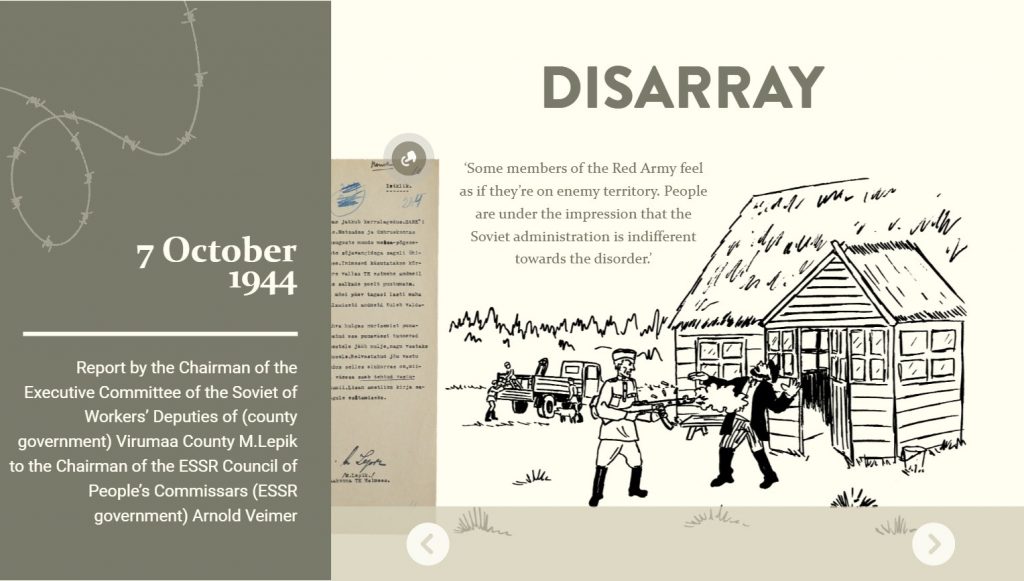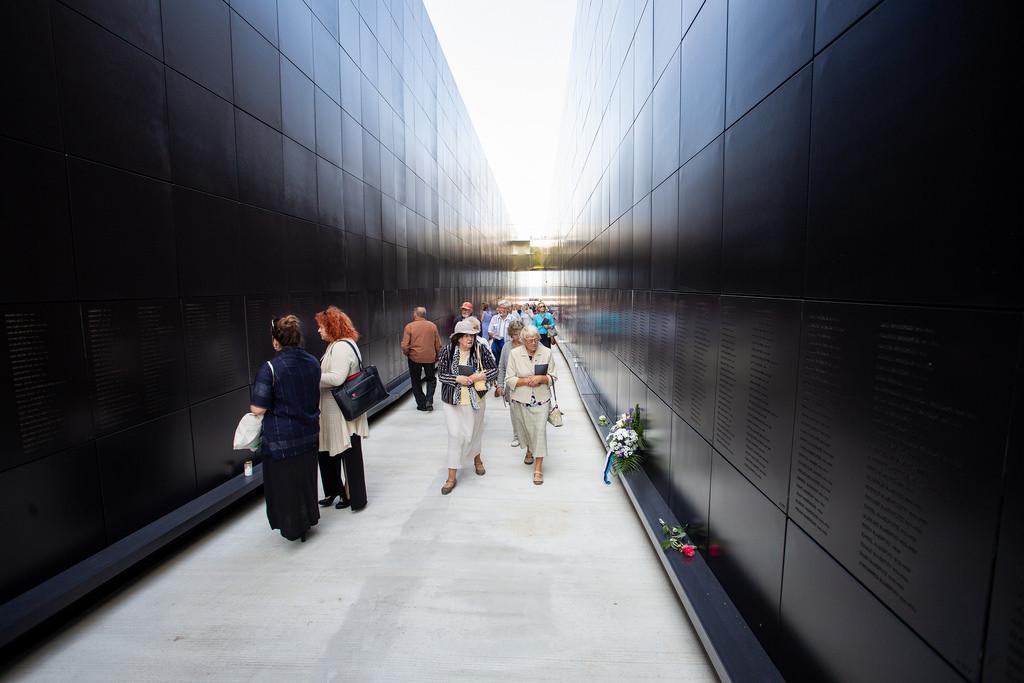The Estonian Institute of Historical Memory has compiled an interactive exhibition, “The ‘Liberator’ Arrived” – about the terrors of the Soviet Union’s Red Army that occupied Estonia and many other countries in 1944.
The viewer gets an introduction to life in Estonia in 1944-1945, when the country had fallen under the occupation of the Red Army yet again. “The contradiction between the Soviet propaganda and the reality was outrageous. The exhibition is based on official documents of the era that are compared with the Soviet propaganda posters,” the Estonian Institute of Historical Memory said in a statement.
“It is important to remember that the end of the Second World War 75 years ago did not mean liberation to many European nations; instead, they fell under the control of a new conqueror,” Meelis Maripuu, a board member of the institute, said in a statement. “The Red Army’s invasion in Estonia and the reoccupation of the country in 1944 was a catastrophe not only in the light of international law, but also because it meant our people fell victim to the uncontrollable terror of the Red Army soldiers and officers.
The archived reports of the communist functionaries a valuable source
According to Peeter Kaasik, a senior researcher at the institute and the curator of the exhibition, the unlawfulness of the Red Army soldiers and officers as well as the direct violence against defenceless civilians reflects in the archive reports of communist functionaries, who themselves felt they were unable to control the situation.

“The creation of the myth of a ‘liberator’ immediately after the reoccupation of Estonia was an important task for the Soviet propaganda, because it aimed to strengthen the legitimacy of its own power,” Kaasik said. “It has to be said that the creation of this myth was unsuccessful, because the actual contact with the Red Army soldiers often resulted in a loss of property, health or life for civilians. Estonians understood that a new violent occupation had been established, not that they had been liberated.”
The exhibition, compiled in collaboration with the Estonian National Library, is available in English, Russian and Estonian.
The Soviet terror in Estonia
The communist campaign of terror started in Estonia in the autumn of 1944, once the Red Army had again conquered the country (the Red Army’s first occupation lasted from 1940-1941). Over 16,000 people were imprisoned for non-criminal reasons in 1944–1945 (over 35,000 people in total were imprisoned for political reasons during the Soviet occupation of Estonia that lasted until 1991). Nearly 500 of them were sentenced to death and murdered. Thousands more died in the GULAG – the Soviet forced labour camp system.

In 2018, a memorial to the victims of communism was opened in Tallinn, dedicated to all the people who suffered under the terror inflicted by the Soviet Union and its power instruments, among them the Red Army. The names of over 22,000 people from Estonia who were murdered or who died due to inhuman living conditions in imprisonment or forced exile are inscribed on the memorial’s name plaques.
Cover: The Red Army troops of the Soviet Union marching in Tallinn in 1940.

